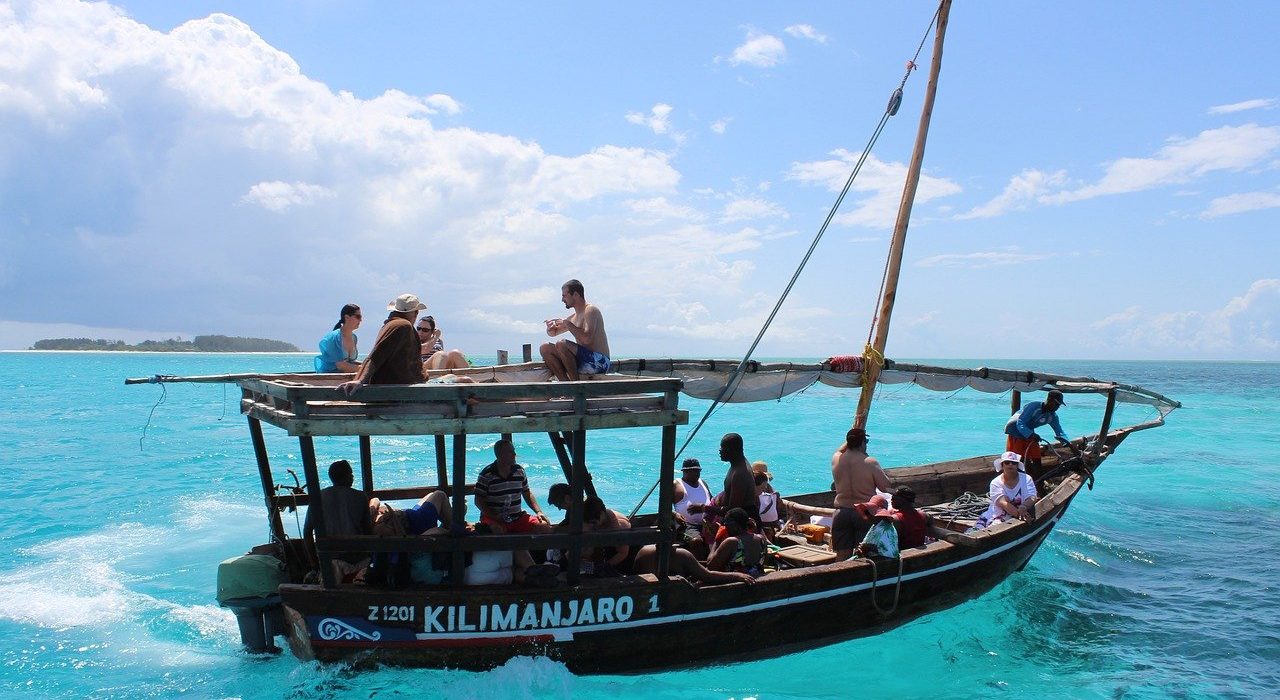
The Best Time to Plan Your Tanzania Honeymoon Safari – Luxury Tanzania Safaris

Choosing Your Ideal Time
Now, let’s explore the unique beauty of each season to find the best time for your dream Tanzania honeymoon safari based on what you love.
January to March: Hot Times and Calving Season
At the start of the year, temperatures in Tanzania can soar, reaching up to 35°C along the coast. It is the hottest and most humid time of the year and most of the scenery on safari is lush and green due to the short rainfalls. It is also the Calving Season where new life is seen everywhere.
March to May: The Green Beauty of the Long Rainy Season
From the end of March to May, consistent rain turns everything green. Jacaranda trees bloom in dazzling purple, and although some parks might be a bit trickier to access, you get a lush landscape. The lower park fees and reduced tourist numbers present an opportunity for exclusive wilderness experiences.
June to October: Cool Weather and Popular Travel Time
These months are Tanzania’s driest, offering great wildlife viewing with clear views. Migratory animals move across the national parks, and the temperatures are comfortable. However, June and September are peak tourism seasons, so expect more crowds and higher prices.
November to December: Short Rains and Nature’s Vibrancy
November brings short rains, keeping the land green and wildlife active. Watch impressive lightning storms and welcome migrant birds. To avoid holiday peak pricing and crowds, consider skipping the end of December.
Wildlife and Safari Experiences Throughout the Seasons
Apart from affecting the weather and landscapes, Tanzania’s seasons shape wildlife action and the safari experience.
Dry Season: Lots of Wildlife and Beautiful Views
From June to October, the dry months offer abundant wildlife, including:
-
Large herds of wildebeest, zebra, and gazelles in the Serengeti
-
Hippos and crocodiles in Ruaha National Park
-
Flamingos at Lake Natron
Big cats are easier to spot hunting on the sparse grasslands. Enjoy stunning views and plenty of wildlife, but be ready for more fellow travelers. Plan and book ahead for the best experience.
Key National Parks: Serengeti, Ngorongoro, Tarangire, Ruaha
Rainy Season: Green Landscapes and Active Wildlife
Between November and May, rain transforms the savannas into lush grasslands, perfect for spotting:
-
Zebras, giraffes, and buffalo in Ngorongoro Conservation Area
-
Wildebeest and zebra newborns in Serengeti National Park
-
Cheetahs hunting for newborn calves
The rainy season offers greener safaris with fewer crowds at lower prices. Fantastic wildlife sightings are possible.
Key National Parks: Serengeti, Lake Manyara, Ngorongoro
So, whether you fancy the heat, the greenery, or the cool weather, Tanzania’s seasons offer something special for every safari adventurer.
Busy Times and How It Affects Costs and Availability
Knowing when more tourists visit helps plan for expenses and ensures availability of your preferred accommodations.
High Season (January/February and June to October):
Lots of tourists, especially in popular parks like the Serengeti.
Prices for places to stay and safari activities are high.
Shoulder Season (November, early December):
Less crowded, so more personal experience.
Most accommodations offer lower rates during this time
Low Season (April to May):
Fewer tourists, quieter safaris. Everything is lush and green. Perfect for bird watching.
Lodges often offer discounts.
Best Time for Seeing Animals and Nice Weather
June to October:
Best for wildlife viewing as animals gather near water sources.
Daytime temperatures are comfortable, and nights are cool.
January-March:
Short rains and plenty of new life on the plains of the southern Serengeti
Picking Based on Weather:
If you like cooler weather, go for the dry season.
If you like green landscapes, try the green season.
Wildlife Migration Patterns
The Serengeti National Park in Tanzania is famous for one of the most remarkable wildlife events – the Great Migration. This annual journey involves millions of wildebeests, zebras, and other animals moving across the plains in search of food and water.
Though many people assume that the peak migration occurs during July and August in Tanzania, the circular route means an ongoing movement of wildlife throughout the year. Time your safari to witness iconic river crossings, predators in action, or newborns taking their first steps.

